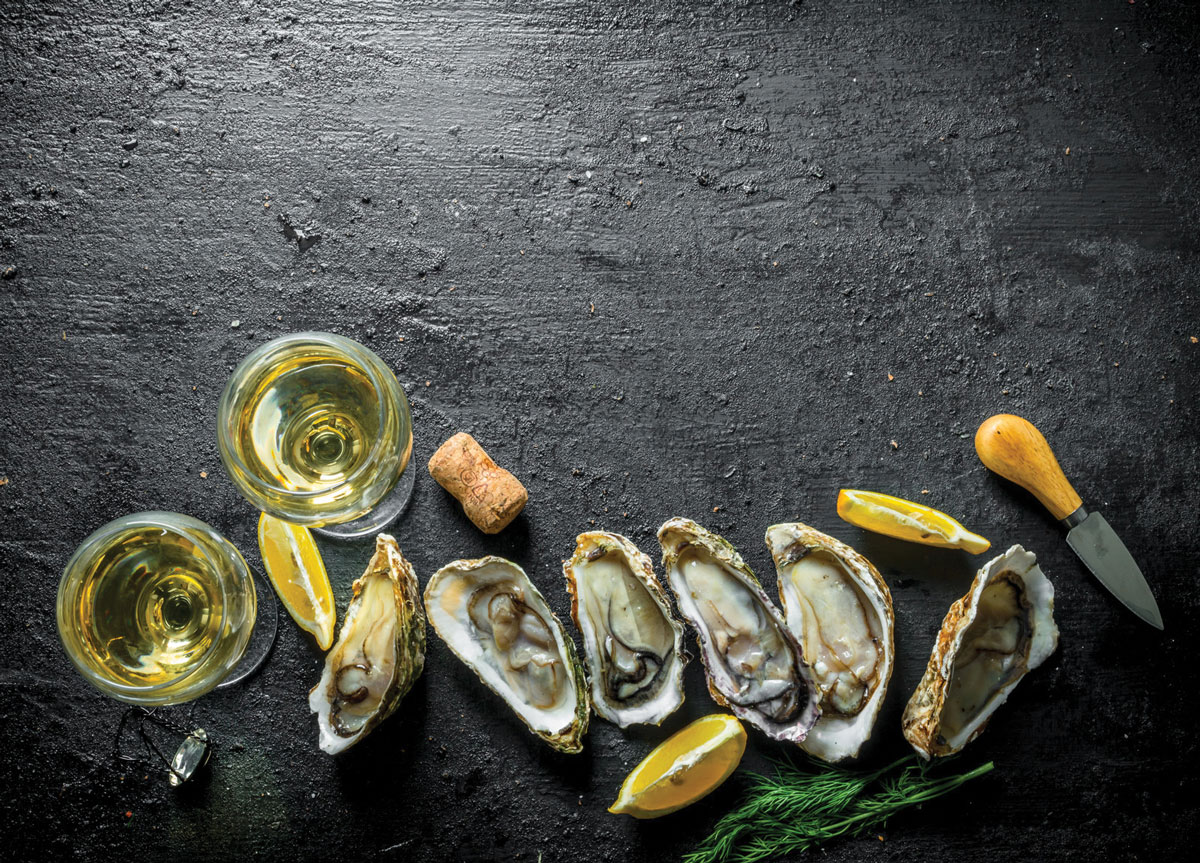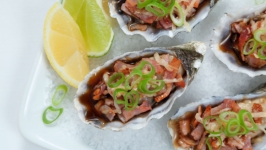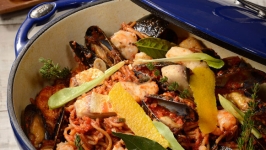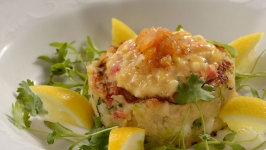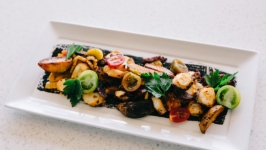Sip and Slurp
Alex and Nick have been popping up at Wolfe’s Wine Shoppe for six months now and each month I get a mollusk lesson in cup size, brine, plumpness and finish.
Do you prefer oysters for their salty and briny flavors? Or do you savor their creamy qualities? For me, when you eat raw oysters, you need something very dry with high acidity. Envision squeezing a spritz of lemon over your shellfish. That’s what we want our wine to do. White wine, sparkling or still, is a classic pairing with oysters. The high acidity and naturally crisp style pairs perfectly with fresh seafood. Today, you can really pair oysters with anything you want – even red wine. The key is to sidestep anything overly heavy, oaky or tannic. The flavor and structure of your wine should be light; otherwise, you’ll overpower the oyster. These five varieties of mollusks should be available this spring:
Chablis + Violet Cove
Chablis is known for its fabled white wines with notes of hazelnut, almond and apple. Wines from here are a world of difference from anything from California. Chablis is distinct from any other type of Chardonnay because of the soil and the Kimmeridgian limestone. This soil contains pieces of fossilized oysters, so it’s a perfect accompaniment for the briny bivalves.
TO DRINK: Lavantureux Chablis 2018
TO EAT: Violet Coves, from Moriches Bay, Long Island, are meaty, with a larger shell, high brine and a lasting saltiness.
Champagne + Kusshi
Oysters and Champagne are as much of an iconic duo as Batman and Robin. Both texture and flavor are at play here: the fine bubbly texture of the Champagne highlights the silky, smooth, creamy texture of the oyster, and the citrus flavor in Champagne showcases the brine and earthiness of oyster meat.
TO DRINK: Champagne Aubry Rosé Brut Premier Cru NV
TO EAT: Kusshis, from Vancouver Island, British Columbia, are super delicate in flavor with a burst of cucumber and celery with a light finish.
Gamay
Yes, red – no rules, just drink what you like. Beaujolais is the perfect option. With red fruits, cherries and raspberries and earthy forest notes in the background, Gamay’s low tannins and soft structure with relatively high acidity means your palate will stay refreshed.
TO DRINK: Open a bottle of Alex Foillard Beaujolais-Villages 2019
TO EAT: Kumamoto, San Quintín, Baja California, are known for a light brine and honeydew melon finish. You can find these along the whole West Coast, from Mexico all the way to Washington state.
Muscadet + Hood Canal
Located near the coast, Muscadet, a wine-producing region in the Loire Valley, is never far from oysters. Their wines, made from the Melon de Bourgogne grape, are high in acidity with flavors of citrus and orchard fruit. Muscadet Sèvre-et-Maine Sur Lie has a creamy texture that pairs well with fried oysters.
TO DRINK: Michel Delhommeau Muscadet Sèvre-et-Maine Sur Lie 2016
TO EAT: Hood Canal from Washington State, featuring a light and clear brine with melon finish. They have a bit of crunch on the meat, more of a chewy texture, not a lot of liquor in the shell.
Sauvignon Blanc + Lucky Limes
Sauvignon Blanc’s acid and lemony notes cut through the richness of oysters.
TO DRINK: Riffault Les Boucauds Sancerre 2019
TO EAT: Lucky Limes, Prince Edward Island, offering up citrus notes with a high brine, a metallic note and a zesty, lasting finish.


